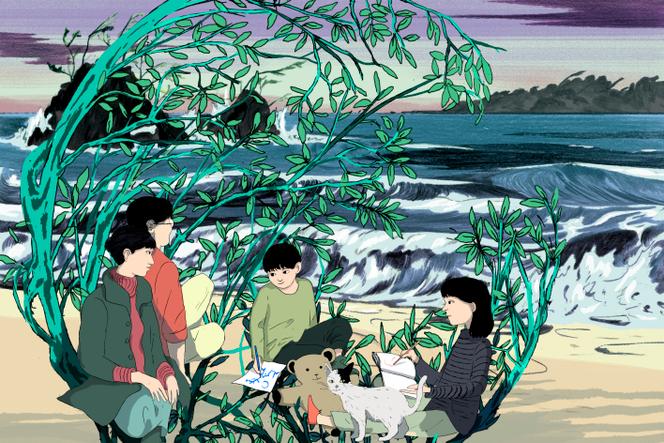


Snow fell on Nanao, a town located on the Noto peninsula in central Japan, which was affected by the violent earthquake on January 1. Here, the Terada family received ramen from a distribution point in front of an evacuation center. The hot dish felt good. The earthquake damaged the gas and water networks. It was impossible for them to cook at home.
The two children enjoyed it, especially as they were not really aware of the gravity of the situation. "At two and four, they are still small," said their mother, Yuko, who despite everything tried to hide her anxiety from them. The family home held up, but "there are a lot of scary aftershocks."
When disaster strikes, aftershocks, precarious conditions in evacuation centers, changes in living conditions and even the loss of a loved one are factors that disrupt the daily lives of the young. A survey carried out by the Ministry of Education after the March 11, 2011, earthquake in the eastern part of the archipelago revealed that 18% of primary school children and 12% of secondary school students were suffering from post-traumatic stress disorder. Disorders can take time to manifest themselves. After the 1995 Kobe earthquake, the Hyogo Prefectural Board of Education (west) determined that the number of children in need of psychological care had peaked three years after the disaster.
In the Noto peninsula, where the earthquake left 232 dead, including a five-year-old child, 21 missing and over 1,000 injured, similar cases are expected. "The children often ask us when we'll be back home. We can't tell them because it's so damaged. But I have the impression that they are less afraid because we are together," said a mother of three. Today, the family lives in a classroom in a high school in Suzu, a town hit by the earthquake, and also by a tsunami.
The frequency of disasters in Japan is pushing the authorities to enhance their guidance to parents on mitigating the impact of emergency evacuations on children. "If possible, you can spend some time in a hotel to give the impression of a trip. Some municipalities cover part of the accommodation costs," explained public broadcaster NHK on its disaster website. "Children can be restless in evacuation centers, especially if the surroundings are unfamiliar to them. To help them relax, bring treats and familiar toys. If you are worried about the noise these make, consider coloring books or playing cards."
"Children in affected areas need food, shelter and basic support, such as a safe place to play, learn and connect with friends and loved ones. That is the most important aspect of mental health and psychosocial support," said Miyuki Akasaka, mental health advisor for Save the Children. The NGO has provided emergency kits and cuddly toys to children evacuated from Nanao, as well as brochures that provide advice on psychological support. It insists on the creation of specific spaces for children, also as a means of relieving the burden on parents, who tend to do everything they can to mask their anxiety, while they themselves are in shock.
You have 30% of this article left to read. The rest is for subscribers only.
